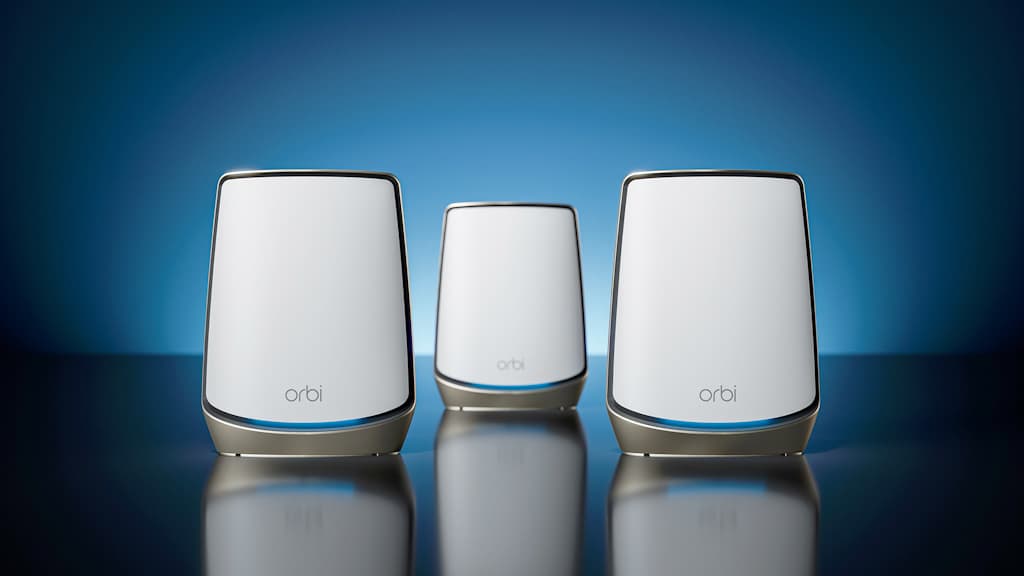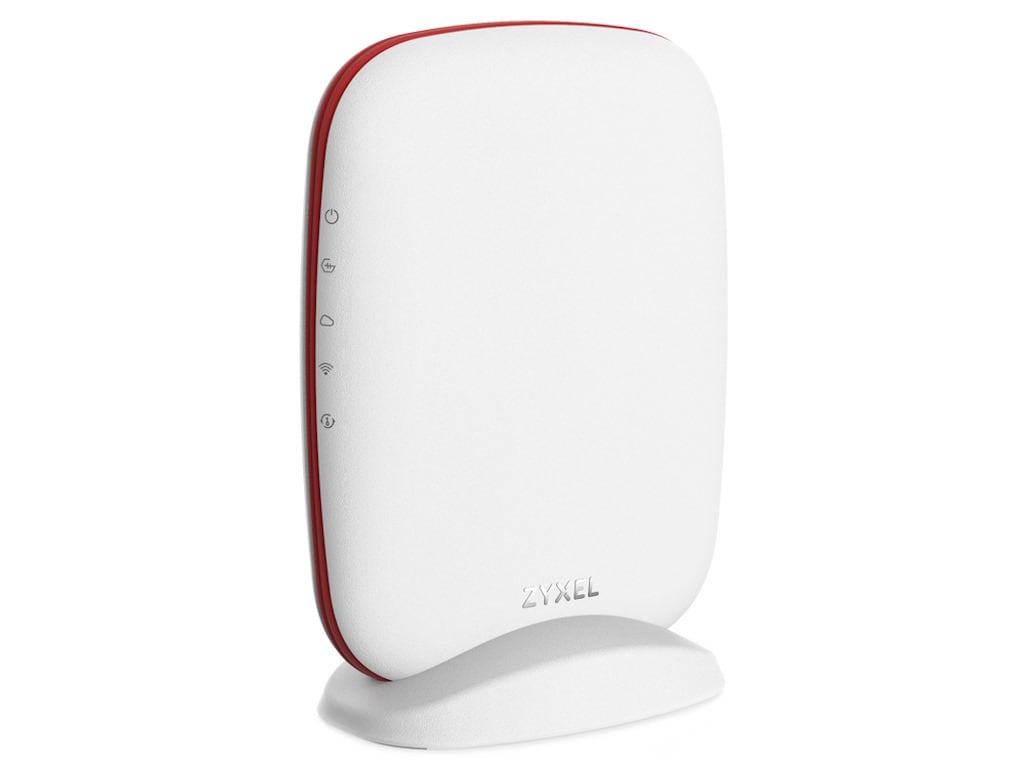Summary
Netgear Orbi Wi-Fi 6E REVIEW
It comes with a premium price but Netgear’s Orbi is the king of mesh systems, writes PAT PILCHER, and will banish those black spots.
$3198.99
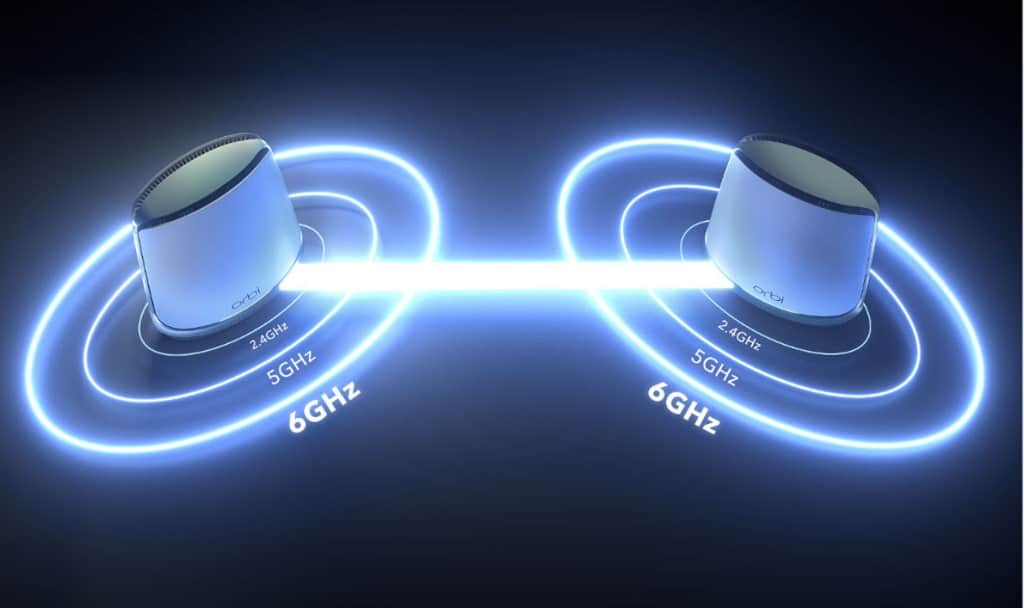
 I’ve long waxed lyrical on the wonders of Wi-Fi mesh systems. They’re the dog’s bollocks for curing Wi-Fi coverage and performance issues around your home. A mesh set-up consists of a mesh router and satellite nodes. You can have as many nodes as you need. The mesh system will ensure all the nodes are interconnected to expand Wi-Fi reach and spread the load on your network (which is super handy if you use a lot of smart home gear).
I’ve long waxed lyrical on the wonders of Wi-Fi mesh systems. They’re the dog’s bollocks for curing Wi-Fi coverage and performance issues around your home. A mesh set-up consists of a mesh router and satellite nodes. You can have as many nodes as you need. The mesh system will ensure all the nodes are interconnected to expand Wi-Fi reach and spread the load on your network (which is super handy if you use a lot of smart home gear).
The current king of the hill for all things mesh related is Netgear with their Orbi line of mesh hardware. For years it has been ranked as the top performer in many mesh router round-ups. Now they’ve refreshed their Orbi line-up with added support for Wi-Fi 6E, otherwise known as 802.11axe.
This should allow the Orbi gear to deliver super-fast multi-gigabit speeds using the uncrowded 6GHz band. Further helping things blaze along is support for 10Gbps ethernet WAN (making it ideal for Hyper-fibre users) and 2.5Gbps LAN ports. Putting it simply, the Orbi has more in common with a Lamborghini Countach Diablo than it does with networking hardware.
Would you like to support our mission to bring intelligence, insight and great writing to entertainment journalism? Help to pay for the coffee that keeps our brains working and fingers typing just for you. Witchdoctor, entertainment for grownups. Riveting writing on music, tech, hi-fi, music, film, TV and other cool stuff. Your one-off (or monthly) $5 or $10 donation will support Witchdoctor.co.nz. and help us keep producing quality content. It’s really easy to donate, just click the ‘Become a supporter’ button below.
The supplied review gear came with a mesh router and two satellite nodes. According to Netgear’s bumf, this set-up provides coverage for homes of up to 840 square metres, so even McMansions are covered. For super-sized McMansions, additional nodes can be purchased separately and are easily added using the Orbi mobile app.
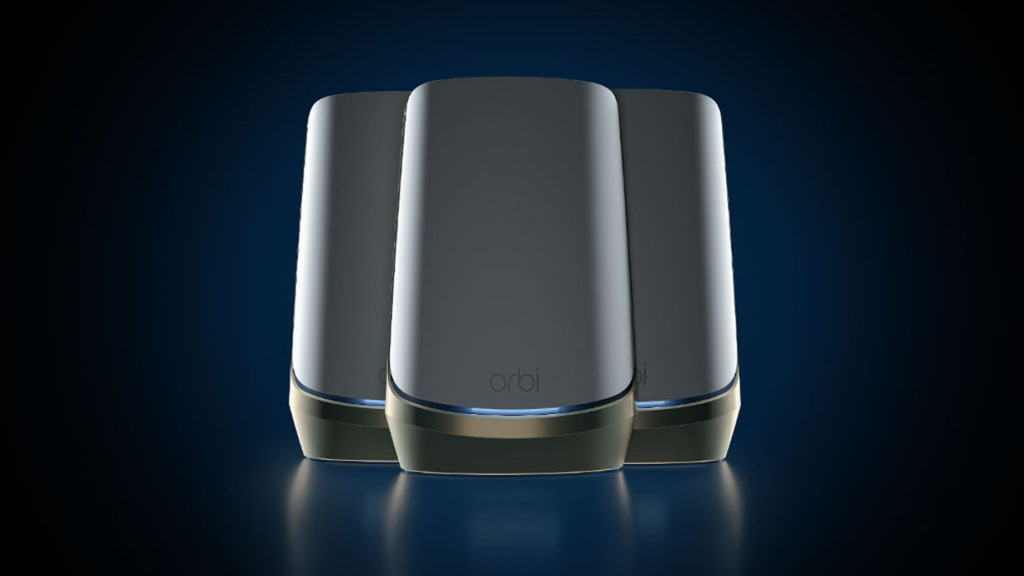 Design-wise, the Orbi units differ little from their earlier siblings. They’re large and resemble a vertical cross-section of a wing. This gives them a smooth sweeping look which helps them to blend into the background a little more. A key factor figuring in their size is their 12 internal high-performance antennas. The review units had a soft matte white finish and a slick-looking alloy base. Aesthetically, it’s a pleasing look that is helped by discrete status indicator lights so the Orbi’s don’t look like cyber insects who fell into a pile of LEDs.
Design-wise, the Orbi units differ little from their earlier siblings. They’re large and resemble a vertical cross-section of a wing. This gives them a smooth sweeping look which helps them to blend into the background a little more. A key factor figuring in their size is their 12 internal high-performance antennas. The review units had a soft matte white finish and a slick-looking alloy base. Aesthetically, it’s a pleasing look that is helped by discrete status indicator lights so the Orbi’s don’t look like cyber insects who fell into a pile of LEDs.
They may look identical, but the satellite nodes differ slightly from the router. The router node has a 10Gbps Ethernet WAN port, a 2.5Gbps Ethernet LAN port, and 3x gigabit LAN ports. There are no USB ports. This limits USB-connected printers/scanners to wireless connectivity or being hooked up directly to your PC/Mac. While the satellite nodes don’t have a 10Gbps WAN port, they have a 2.5Gbps Ethernet port and 3x 1Gbps LAN ports. The satellites use one of the 5GHz bands for dedicated wireless backhaul (which I suspect plays a big part in their super quick performance). Still, you can use the 2.5Gbps port for a wired backhaul configuration should you need performance over bigger distances.
As with earlier Orbi gear, the front of each node has a discretely tucked away RGB status LED. It’ll glow solid white when everything is working, green when the router is booting up, amber when the router is restarting, and blinking red if there is an error. For placing the Nodes, the LED indicator proved worth its weight in gold. The LED indicator on the satellite node glows blue when the node has a strong connection back to the router, amber when the connection is okay, and magenta when there is no connection. Thanks to the colour-coded status LED, getting set up was so idiot-proof that even I managed it. It has also proven super handy for seeing how each node is performing.
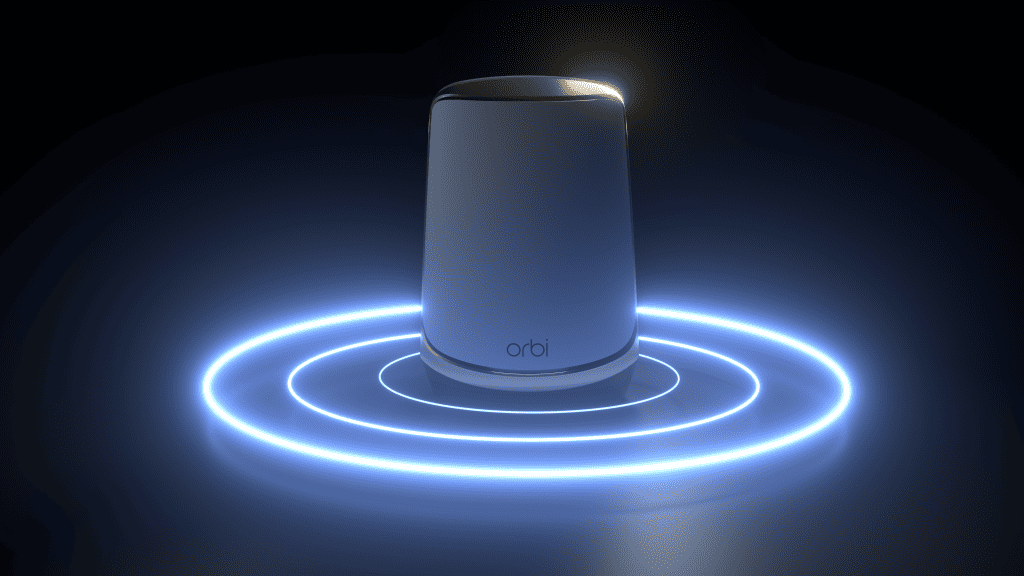 Under the hood, you get a muscular spec. Each node is powered by a 2.2GHz quad-core CPU, 1GB of RAM, plus 512MB of non-volatile RAM. On the radio front, you get a quad-band AX11000 set-up. This, in non-geek speak, means they are theoretically capable of a zippy 1.2Gbps on the 2.4GHz band, 2.4gbps on the two 5GHz bands and a stonking 4.8gbps on the 6GHz band. Wi-Fi 6 is supported, so you get all that good stuff too. The star of the show (assuming you have gear that can use it) is Wi-Fi 6E. It uses the practically empty 6GHz band, which should, in theory, deliver blazing speeds under optimum conditions, especially where there are many neighbouring Wi-Fi networks.
Under the hood, you get a muscular spec. Each node is powered by a 2.2GHz quad-core CPU, 1GB of RAM, plus 512MB of non-volatile RAM. On the radio front, you get a quad-band AX11000 set-up. This, in non-geek speak, means they are theoretically capable of a zippy 1.2Gbps on the 2.4GHz band, 2.4gbps on the two 5GHz bands and a stonking 4.8gbps on the 6GHz band. Wi-Fi 6 is supported, so you get all that good stuff too. The star of the show (assuming you have gear that can use it) is Wi-Fi 6E. It uses the practically empty 6GHz band, which should, in theory, deliver blazing speeds under optimum conditions, especially where there are many neighbouring Wi-Fi networks.
Another bonus is that the Orbi system also has Smart Parental controls. These allow you to create profiles for individual family members, so you can manage online time on a per child/kidult basis. If needed, you can also pause internet access. There is also age-based content filtering and detailed reporting. However, these require a premium subscription (out of the box, you get a 30-day trial period). You also get a 30-day trial of Armor network security software which uses Bitdefender. It’ll scan for security threats and protects devices on your network from intrusions.
Managing everything and getting set up is done via an Android or iOS smartphone app. For those without a smartphone, there is also a web-based management console. While the mobile app is handy, it is a tad dumbed down, which means the web console is a must if you want to access any advanced settings.
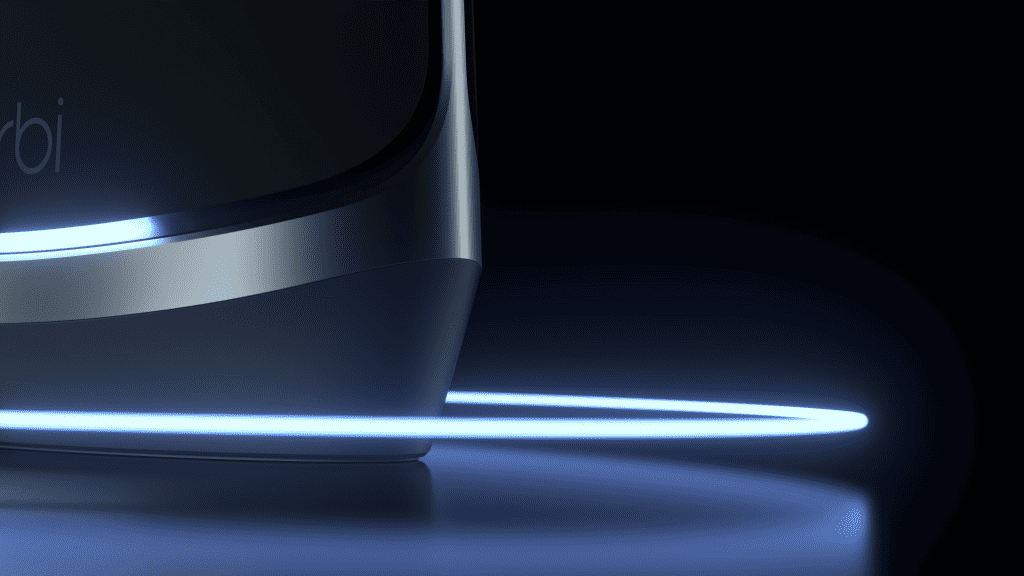 Speaking of getting set up, the Orbi was the easiest mesh system I’ve ever installed. After installing the mobile app, I followed the set-up steps. Within 10 minutes, there was sparkly, super-fast Wi-Fi goodness throughout my entire home. Because I am using Orcon Hyper-fibre and need a landline for business use, I am stuck with their router. Hooking a mesh system into an existing router usually requires additional fiddling. You normally need to switch the mesh router to access point or bridge mode to avoid DHCP conflicts and other networking issues. This step is never accommodated in the app-based set-up process of most mesh router brands. It leads to much cursing, muttering and hand-wringing before everything works. Not so with the Orbi gear, though. All told, the set-up process was seamless and just worked. It’s a first for mesh network gear and hugely adds to the Orbi’s appeal.
Speaking of getting set up, the Orbi was the easiest mesh system I’ve ever installed. After installing the mobile app, I followed the set-up steps. Within 10 minutes, there was sparkly, super-fast Wi-Fi goodness throughout my entire home. Because I am using Orcon Hyper-fibre and need a landline for business use, I am stuck with their router. Hooking a mesh system into an existing router usually requires additional fiddling. You normally need to switch the mesh router to access point or bridge mode to avoid DHCP conflicts and other networking issues. This step is never accommodated in the app-based set-up process of most mesh router brands. It leads to much cursing, muttering and hand-wringing before everything works. Not so with the Orbi gear, though. All told, the set-up process was seamless and just worked. It’s a first for mesh network gear and hugely adds to the Orbi’s appeal.
Performance-wise, the Orbi mesh system is also the fastest I’ve ever tested. Using a borrowed Samsung Galaxy S21 Ultra phone (which handily has Wi-Fi 6E baked in), 6Ghz throughput ranged from 1.1Gbs close to an Orbi node to a still super-fast 920Mbps outside my front door. The only downside with using the 6Ghz band is that signal reach isn’t as wide as with the 5Ghz or 2.4Ghz bands. Still, as the Orbi can switch your device to whichever band has the strongest signal, this is unlikely to ever be a problem.
If by now you’re thinking that I’m super-impressed with the Orbi, you’d be totally right. Not only was it a doddle to set up, but it also provides rock-solid, house-filling Wi-Fi coverage along with lots of nifty features. Unfortunately, all that goodness doesn’t come cheap, and this is where there’s a gotcha. The Orbi Wi-Fi 6E 3-node set-up costs $3198.99, which is pretty steep. That said, for your money, you’ll be getting the best Mesh system that can be bought.






